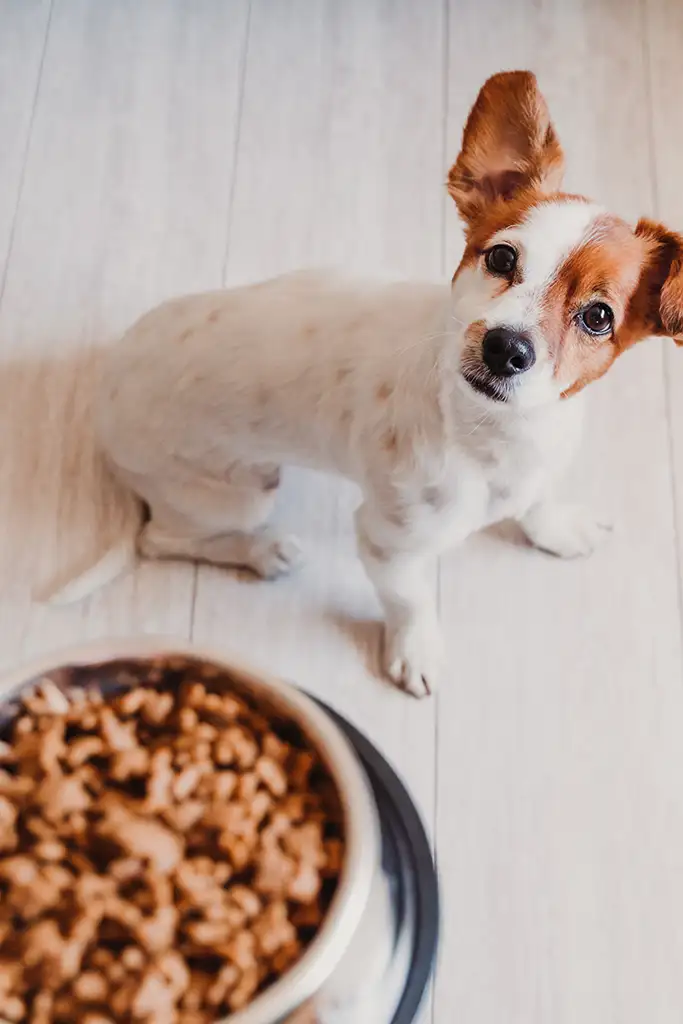Shetland Sheepdog
Quick Guide
- Introduction to the Shetland Sheepdog
- History of the Shetland Sheepdog
- Shetland Sheepdog Coat and Appearance
- Shetland Sheepdog Health-Related Issues
- Shetland Sheepdog Temperament
- Training Tips for Shetland Sheepdog
- Exercise Requirements of Shetland Sheepdog
- Shetland Sheepdog Grooming
- Shetland Sheepdog Fun Facts
- Common Shetland Sheepdog Mixes
- Shetland Sheepdog FAQs
Introduction to the Shetland Sheepdog
With a soft, appealing expression and looking like a small Collie, the Shetland Sheepdog is the 21st most popular breed in the United States.
Known for being bright, playful, and energetic, the Sheltie is a small herding dog that was developed in the Sheltand Islands of Scotland. Like other animals from those harsh islands, such as the ponies and sheep, the dogs used for herding were also smaller than the herding dogs on the mainland.
Although the Sheltie looks like a miniature Collie and they may share some ancestors, they are not really a Toy version of the bigger dogs.
Shelties are exceptionally intelligent, trainable, and very loyal dogs. They are considered to be one of the best breeds for obedience and other dog sports. Shelties are versatile and talented at doing many things.
Shetland Sheepdogs can make very good family dogs, though they are usually better in the suburbs or country than in the city due to their love of barking.
History of the Shetland Sheepdog
The exact origins of the Sheltie are not known but the dogs were probably mixed breeds of some kind on the Shetland Islands. They may have included spitz-type dogs since the Shetlands were once owned and ruled by Scandinavians and Norse peoples who may have brought spitz-type dogs with them to the islands. Some people have suggested that the original dogs on Shetland were similar to the Icelandic Sheepdog or the Norwegian Buhund. There is also an extinct breed called the Greenland Yakki which may have been similar to the dogs on Shetland.
By around the 15th century there was more contact with mainland Scotland and more Scottish dogs on the islands. Like the Collie found in mainland Scotland, the Sheltie shares some of the same Border Collie ancestors. (“Collie” is a Gaelic word meaning “useful,” so it was a widely-used term for useful dogs. It didn’t necessarily refer to a specific breed.) Some of these herding dogs were brought to the Shetlands and bred with the local dogs. At this time the local dogs were described as small, longhaired, and intelligent. The dogs that resulted were also small, which the local farmers liked. There were also some later crosses with Collies and other herding dogs to improve the herding abilities of the small Shetland dogs. The Shelties were used for helping on the farm and to guard the home. The dogs were good as watchdogs at cottages and for guarding flocks and herds, as well as herding. Some have theorized that the old King Charles Spaniel and the Pomeranian were also used to give the Sheltie his appearance. By the early 20th century, Shelties were about 12 inches tall.
When the breed was first introduced in England it was called the Shetland Collie but this caused an uproar with Rough Collie breeders and the name was changed to the Shetland Sheepdog. In the early 20th century there were quite a few crosses with Rough Collies to try to keep the Rough Collie look in the Sheltie, and perhaps make the breed a little larger, though this practice was discontinued in the 1940s. The breed was accepted by the Kennel Club in England in 1909. The AKC accepted the breed in 1911.
Shetland Sheepdog Coat and Appearance
According to the AKC breed standard, the Shetland Sheepdog is a small breed that stands 13 to 16 inches tall and weighs 15 to 25 pounds. These dogs are similar in appearance to a miniature Rough Collie but there are some key differences. This breed is small, alert, and rough-coated with long hair, great agility, and sturdy composition. Males of the breed have a decidedly masculine appearance while females are feminine. The body is well proportioned, the heat refined, and the muzzle well-rounded. These dogs have dark, almond-shaped eyes with a gentle but intelligent expression. Their ears are small and placed high, carried three-fourths erect.
In terms of its coat, the Shetland Sheepdog has a thick double-coat with a short, dense undercoat and a long, straight outer coat of harsh hair. The fur on the face, feet, and tips of the ears is smooth while the fur around the neck forms a thick mane and frill, particularly in males. Most dogs have feathering on the forelegs and hind legs, though the fur is smooth below the hock joint. The hair on the tail is profuse. Common colors for the breed include black, blue merle, and sable with white or tan markings. There should be no rustiness or pale, washed-out color.
Shetland Sheepdog Health-Related Issues
Shetland Sheepdogs are usually considered to be athletic, healthy, sturdy little dogs. According to surveys, the typical lifespan for the breed is 12 to 13 years.
The AKC parent club for the breed, the American Shetland Sheepdog Association, is very involved in health matters for the breed. According to the parent breed club, Shelties can be subject to eye diseases, hip dysplasia, thyroid disease, epilepsy, dermatomyositis (Sheltie Skin Syndrome), and von Willebrand’s disease (vWD). These problems are not necessarily considered to be common but they are things that breeders are aware of in the breed. It is recommended that breeders test dogs they are considering breeding for hip and eye problems; and they should choose two tests from among other issues found in the breed: von Willebrand’s Disease, Multiple drug sensitivity (MDR1) DNA test, Autoimmune thyroiditis, Collie eye anomaly DNA test, Elbow dysplasia evaluation. There are also some optional tests for Sheltie breeders that include Congenital cardiac database and the American Temperament Testing Society, TT title.
Shetland Sheepdogs are one of the breeds that can have the MDR1 gene mutation. This mutation is sometimes found in herding breeds. (Mixed breeds can also be affected.) It’s estimated that about 15 percent of Shelties have the mutation. This means that these dogs can be more sensitive to many drugs. Some of the drugs that a dog can be sensitive to if he has this mutation include: Acepromazine, Butorphanol, Doxorubicin, Erythromycin, Ivermectin, Loperamide, Milbemycin, Moxidectin, Rifampin, Selamectin, Vinblastine, and Vincristine. You can have your dog tested to find out if he has the gene that causes this drug sensitivity. If you have a Sheltie, be sure to talk to your veterinarian about MDR1. All veterinarians are aware of this issue in dogs. You will need to consider this issue when it comes to heartworm medication and other drugs.
As with some other breeds, merle to merle breedings are often discouraged because there is a higher chance of producing puppies that are blind or deaf. Color genetics in Shelties can be complicated so anyone considering breeding a Sheltie is encouraged to study this subject when planning a breeding.
If you are interested in getting a Sheltie, it’s a good idea to talk to breeders about health issues in the breed and the tests that the breeder has had done with their dogs. Ask about health guarantees, for example. No breeder can guarantee that a dog will never get sick or have a health problem, but good breeders will take time to discuss health issues with you and talk about their dogs’ health.
For more information on Sheltie health issues visit the club’s website.
Shetland Sheepdog Temperament
Shetland Sheepdogs are considered to be one of the most intelligent of all dogs. According to Dr. Stanley Coren’s rankings in the book The Intelligence of Dogs, Shetland Sheepdogs ranked 6th out of 132 breeds rated. The rankings were done by obedience trainers and were based on things like how quickly dogs learned new commands and how fast they obeyed.
Shelties usually make great family dogs and they get along well with children. However, like many herding dogs, they can have a tendency to herd small children and other pets. They also have a well-deserved reputation for being yappy. Shelties like to bark. For this reason they are usually better suited for life in the suburbs or in the country than in an apartment.
Shelties are usually very adaptable so they can get along with many different lifestyles. They do need regular daily exercise. These dogs have lots of energy. If they don’t get enough exercise each day then they can become nervous or destructive.
According to many people Shelties are so smart and intuitive that they have an almost human understanding. They are devoted to people they love and very loyal. They are gentle dogs. They do tend to be very alert and they will sound the alarm when strangers approach – things that make them a good watch dog.
Shelties make excellent therapy dogs and they are usually the best at any dog sports or activities they take part in, such as obedience, rally, agility, flyball, frisbee, herding, and other sports.
Training Tips for Shetland Sheepdog
The Shetland Sheepdog is a highly intelligent breed, so it should come as no surprise that these dogs are very easy to train. Although the Sheltie is easy to train, they can sometimes be prone to stubbornness, especially if they find the training boring. The best thing you can do is keep your training sessions short and sweet – opt for two or three daily sessions of ten minutes over a single session of 30 minutes. There should never be a need for yelling or harshness with this breed (or with any breed) but you should maintain a firm and consistent hand in leadership with your dog to encourage obedience.
Shelties generally do fairly well when left alone at home, as long as their exercise needs are met. They do, however, have a tendency to bark so you may want to curb this behavior early by teaching your dog to bark and to stop barking on command. You should start training your Sheltie as soon as you get him home because, even at 8 weeks of age, these smart little dogs are capable of learning very quickly. You may not be able to teach him to sit and stay at this young age, but it is never too early to start enforcing house rules and to lay the groundwork for obedience training.
Exercise Requirements of Shetland Sheepdog
Developed as a herding breed, the Shetland Sheepdog is a very active breed. These dogs are not typically hyperactive, though they can become destructive if their daily needs for exercise aren’t met. This breed requires a 30- minute walk once a day and will also appreciate having a fenced yard in which to run and play. These dogs are happiest when they have a job to do, so even if you are keeping your Shetland Sheepdog as a family pet, you should consider training him for dog sports like flyball or agility to provide mental stimulation as well as extra exercise. Though the Sheltie is not a retrieving breed, some dogs do develop a love for tennis balls – you can buy a handheld ball launcher to throw the ball, giving your dog some more exercise without tiring yourself out.
Shetland Sheepdog Grooming
Shetland Sheepdogs are 13 to 16 inches tall at the shoulder and usually weigh between 16 and 20 pounds.
The breed’s coat comes in a range of colors including black, blue merle or sable, with varying amounts of white and/or tan. Shelties have a dense double coat – the outer coat consists of long, straight, harsh hair that is water resistant; and the undercoat has short, dense fur that makes the coat stand off away from the body. The hair on the face, tips of the ears and the paws should be smooth. Shelties have a “mane” of hair and a frill around the neck and throat.
With all of this hair you would be right in thinking that the breed does require quite a bit of brushing and coat maintenance. They shed quite a bit, year-round. They will also have big sheds twice a year, in spring and autumn. The coat tends to mat behind the ears and in other places that rub together, such as behind the elbows. Shaving the coat is not advised because it can be bad for the dog’s skin. In some cases dogs never regrow a significant amount of coat. In some cases dogs will shed hair in clumbs or tufts, making it easier to remove than hair that is shed in small amounts. This is normal with this kind of coat so it’s nothing to worry about. It’s easy to brush these tufts out of the coat.
Shelties don’t require any special clipping or cutting on the coat but they do need a lot of brushing. You can primarily use an undercoat rake and a slicker brush. These two tools will help you remove dead hair and make your dog look nice. If you give your Sheltie a thorough grooming once a week and a quick brush daily to keep mats from forming, he should look good all the time. And you should be able to prevent your house from being covered in dog hair. In addition, you should keep his nailed trimmed and his ears clean, along with taking care of his teeth.
Shetland Sheepdog Fun Facts
- Some people think that the original dogs on the Shetland Islands resembled the Icelandic Sheepdog. The Icelandic Sheepdog is a spitz-type dog that was brought to Iceland by the Vikings. Most of the breed was wiped out in the late 19th century by canine distemper in Iceland.
- The modern Shetland Sheepdog has never been used as a herding dog in the Shetland Islands. The breed is not common in the Shetland Islands today.
- The mother of the first AKC Shetland Sheepdog champion was a Rough Collie. At that time Shetland Sheepdog breeders were still sometimes breeding to Rough Collies in order to make sure Shelties had the Collie appearance that they wanted.
- A Sheltie’s ears are supposed to bend slightly forward or “tip” to help give the dog’s face the desired Sheltie expression.
Common Shetland Sheepdog Mixes
Here are some Shetland Sheepdog mixes we found online:
- Cosheltie – Shetland Sheepdog x Collie
- Eskland – American Eskimo Dog x Shetland Sheepdog
- Poshies – Pomeranian x Shetland Sheepdog
- Shelbea Hound – Shetland Sheepdog x Beagle x Black and Tan Coonhound
- Shelchon – Shetland Sheepdog x Bichon Frise
- Shelillon – Shetland Sheepdog x Papillon
- Sheltipoo – Poodle x Shetland Sheepdog
- Shethund – Dachshund x Shetland Sheepdog
Shetland Sheepdog FAQs
What is a Shetland Sheepdog’s Life Expectancy?
According to a 2004 breed health study conducted by the Kennel Club in the UK, the median age at death for Shetland Sheepdogs was 12 years and 6 months, with the oldest dog in the survey reportedly dying at age 19. The most common cause of death reported for dogs in the survey was cancer (22.8 percent). This is not surprising since cancer is the leading cause of death for dogs in general. In the United States Shelties are also reported to have an average lifespan of 12 to 13 years.
Are Shetland Sheepdogs easy to train?
Shelties are generally considered one of the most intelligent breeds of dog. Most owners and trainers find them eager to please and easy to train. The breed is known for excelling in nearly every kind of dog activity and sport such as obedience, agility, rally, flyball, herding, and tracking. They can learn just about anything you would like to train them to do.
Shetland Sheepdogs like to work so they are usually happiest when they have an owner for a partner who likes to train and do things. Shelties also make good therapy dogs, visiting nursing homes and schools. Your Sheltie will be less happy if he’s doing nothing at home or left in the backyard. That’s when he’ll get in trouble with neighbors with a lot of barking. Without mental activities and exercise Shetland Sheepdogs can develop other behavior problems besides barking such as destroying things in the house. These are dogs that definitely do best with an owner who spends time working with them.
Do Shetland Sheepdogs shed a lot of hair?
Yes, Shelties do shed a lot. Females can shed more than males, but both sexes shed a lot and they shed year-round. They will also have two big sheds per year – one in the spring and one in the autumn. At these times your dog may shed hair in clumps or tufts. You might be able to literally grab a clump of hair and pull it off your dog without hurting him. This is dead fur and your dog is moulting.
Shelties are less likely to shed all over the house if you brush them a little each day and give them a thorough grooming weekly. This will also help prevent tangles and mats from becoming a problem. If you let the coat go without brushing it regularly, the coat will develop mats and the shedding can be a real problem. Shaving the coat is not recommended.
Do Shetland Sheepdogs make good apartment pets?
Shetland Sheepdogs are not usually recommended for apartment living because of their tendency to bark. Although they are small dogs and they are easily trained, it’s very hard to train a Sheltie not to bark. They are usually more suited for the suburbs or a rural life where they won’t get into quite as much trouble if they bark. We know owners, breeders, and even breeder-judges who admit that Shelties have quite an issue with barking. Shelties also require a lot of daily exercise which is more easily satisifed in suburban and rural areas. But the primary reason Shelties are not recommended as apartment dogs is their tendency to bark.
Are Shetland Sheepdogs good with Children?
Yes, Shelties are normally very good with children. They are docile, sweet, intelligent dogs. They are also intuitive and loyal. They love to play and they have lots of energy. Kids love them and Shelties have fun playing with kids. Although Shelties are small, they are not as small as some Toy dogs who can be crushed by a child who falls on him. The only warning about children playing with Shelties is that Shelties can sometimes try to herd children. It’s instinctive with the breed.
It’s always important to teach all children how to play gently with a dog so they don’t pull on tails and ears or do things to provoke a dog into biting. Thousands of children are bitten by dogs every year and most of those cases could be prevented with a little education. Take normal precautions.











